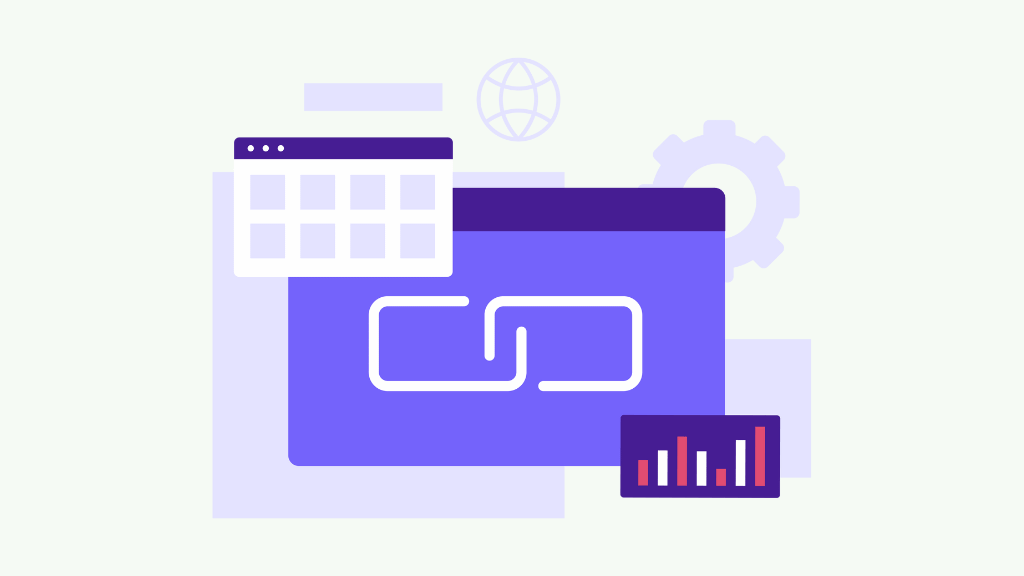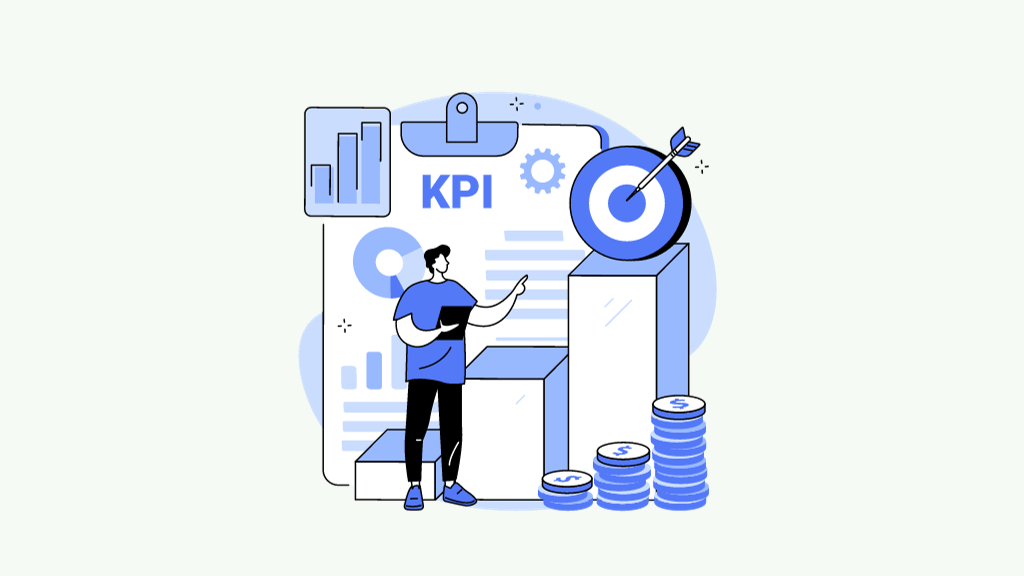In the world of search engine optimization (SEO), backlinks are essential for assessing a website’s visibility and authority. They are hyperlinks that link websites, and search engines use them to determine a website’s authority, relevancy, and reliability. Websites with high-quality backlinks typically rank higher in search engine results pages (SERPs). Backlinks are considered to be one of the factors affecting search engine algorithms.
The world of search engine optimization is always evolving, and one important aspect that regularly shows its value is backlink management. A well-planned and executed backlinks management strategy may significantly boost your website’s search ranks, generate organic visitors, and increase your online presence.
It is also important to improve your backlink profile by focusing on the amount and quality of backlinks. Backlinks, on the other hand, have never been more important in today’s digital age.
We will look at the importance of backlink management as a key component of digital marketing strategy.
What are Backlinks?

Backlinks, also referred to as “inbound links” or “incoming links,” are connections between websites. They are important in finding out a website’s authority, relevancy, and trustworthiness. A website will appear higher in search engine results pages if it has a large number of high-quality backlinks.
Backlinks continue to be one of the most important aspects in determining a company’s ranking on search engines. Incoming links from other websites serve as votes of confidence, showing that the client’s website is credible, trustworthy, and relevant to search engines. An SEO business could increase its clients’ website authority, exposure, and overall organic traffic by building a strong network of backlinks.
Backlinks can come from a variety of sources including social media platforms, blogs, and forums. It’s important that backlinks from relevant and high-quality sources match the content on the receiving page.
Importance of Backlinks
Backlinks indicate that other websites consider your content interesting and have linked to it to increase its worth. As a result, backlinks are important indicators of popularity and reliability, and search engines see these links as signs of authority and trust. Thus, if you want to appear higher in search results and improve site traffic, backlinks are critical and an important SEO ranking component.
Why Manage Links?

Link management is important for a variety of reasons, including website maintenance, user experience, and search engine optimization (SEO).
Visitors to a website who find broken or inaccurate links may get dissatisfied. Managing links ensures that all links on a website operate properly and proceed to the needed information, resulting in a great user experience.
Furthermore, backlink management allows for the development of brand recognition and the establishment of authority. Backlinks from credible sources demonstrate trust and reliability with both search engines and users.
Also, Search engines can penalize pages with broken or spammy links. Managing links helps you prevent penalties and guarantees compliance with search engine criteria. This is particularly important for websites that wish to maintain or increase their search results.
Hence, the main objective of link management is to improve your pages’ SEO performance. You benefit from on-site optimization of your posts by linking to trusted sites. By linking to high-DA sites, you gain a direct SEO ranking boost. As a result, incoming link monitoring and link-building management are critical components of your online presence.
Types of Backlinks
There are many types of backlinks accessible that you may obtain to increase your site’s rating and overall online presence.
a. Natural Backlinks
These are the links that you naturally (or unintentionally) obtain. When you generate high-quality material, other content writers or website owners find it helpful and use it in their subsequent works. These have the best effort-to-value ratio, but they are problematic because you cannot control how you use them.
They are also referred to as editorial backlinks. These are the types of links that a website will organically receive as a result of its interesting and useful content.
They help in the establishment of credibility and authority, the improvement of search engine rankings, and the creation of targeted traffic to a website.
b. Manual Backlinks
When we talk about link building, we usually mean manual backlinks. You “earn” these links by contacting other site owners, managers, or blog editors and requesting a backlink. One of the most important parts of a successful link-building strategy is link acquisition management.
Manual backlinks, however, can be obtained in a variety of ways. You can choose between guest writing, broken link building, and influencer marketing.
Manual backlinks, as compared to natural backlinks, are gained by active efforts. They are useful for increasing rankings, attracting specific traffic to a website, and developing brand awareness and authority.
c. Self-created Backlinks

These hyperlinks are created by website owners or SEO specialists by placing links in comment areas, forums, or low-quality directories. These aren’t as valuable as “regular” backlinks, but they increase traffic and improve your brand’s overall visibility. To achieve results, not everything must be of great quality.
Although obtaining such types of backlinks can be simple, search engines may consider them spam because they are usually of low quality.
It is important to remember that if self-created backlinks are of poor quality or if there are an excessive number of them, they may be harmful to a website’s search engine rankings.
d. Guest Post Backlinks
These are like manual backlinks, except you “earn” them by contributing original content to other people’s blogs. This benefits both of you—you receive a backlink and the blogger benefits from receiving excellent content that they didn’t have to create themselves. However, in certain cases, the link requires payment. Depending on the blog, different prices could apply.
Backlinks from guest posts may help in building authority and trust in a certain field. However, it is recommended to choose a reputable guest posting service and leave the task to the professionals.
e. Forum Backlinks
People share links to helpful tools or important resources in forum discussions. Also, these links achieve their goal even if their value is lower than that of “regular” backlinks. Even if they only boosted your traffic, they would still be well worth the trouble. These can also be manual or natural.
However, website owners have other options for obtaining forum backlinks. For example, they must locate relevant industry forums and take part in conversations there. Respond to inquiries, offer insightful responses, and participate in discussions.
Website owners may increase targeted traffic to their site and build a reputation in their area by including a link to their website in the forum signature or post.
f. Social Media Backlinks

One of the oldest and most heated debates in the SEO business is whether or not social media links qualify as backlinks. They do not count as traditional backlinks, and while they may not have a direct influence on your site’s SEO score, they do increase traffic and visibility.
They may help in increasing a website’s visibility and bringing in targeted traffic. All you have to do is provide shareable, interesting content that appeals to the intended audience.
g. Directory Backlinks
Directories with high traffic, such as Yelp and GMB. Also, they generate snippets that users may choose to click on rather than the standard SERPs. These backlinks have the potential to significantly increase the impact of your SEO efforts, based on the caliber of the directory.
These are the manually created backlinks that a website gains by being listed in online directories. Websites are listed and categorized by industry or topic in online directories. Directory backlinks have the potential to increase a website’s exposure and create authority in a certain field.
Low-quality directories, on the other hand, might be mistaken by search engines for spam and damage a website’s reputation. Instead, you should concentrate on submitting to high-quality directories that are pertinent to the industry of the website.
Links Management and Its Importance in SEO
Links management manages and optimizes your website’s inbound (backlinks) and outgoing links. Monitoring the quality of your backlinks, discovering new link possibilities, and deleting or disavowing low-quality or poisonous backlinks are all part of the process. Proper link management guarantees that your website’s backlink profile remains robust and that your entire inbound link strategy is supported.
Backlinks are important ranking factors for search engines like Google because they function as endorsements or votes of confidence from other websites. A high-quality backlink from a trustworthy and authoritative website tells search engines that your material is useful and trustworthy. This, in turn, can result in higher search ranks, more organic traffic, and better online exposure.
You may acquire high-quality backlinks while preventing the impact of potentially harmful ones by efficiently managing your website’s connections. As a result, an effective link management strategy is important for building and maintaining SEO success.
A backlink profile is a collection of all inbound links from other websites leading to your domain. It’s simply a snapshot of your website’s link landscape, highlighting the diversity, quality, and relevancy of the site’s links to your content. A backlink profile assists search engines in determining the reliability, authority, and value of your website within your topic.
For SEO to be successful, a strong backlink profile is necessary for several reasons:
- Enhanced search rankings: Reputable and relevant websites that offer high-quality backlinks to your content tell search engines that it is reliable, insightful, and useful. Your target keywords may rank better in searches as a result of this.
- Increased organic traffic: Users looking for material relevant to your topic are more likely to find your website when it ranks higher in search results.
- Diversified and natural link landscape: A diversified backlink profile that includes connections from a variety of sources, such as blogs, news websites, and social media platforms, shows search engines that your material appeals to a wide range of people. This has the potential to improve your SEO results.
- Greater online visibility: A strong backlink profile may raise your search rankings and increase the chance of your content being shared across many platforms.
What Metrics Do You Need to Track in Your Link Profile?

Website owners need to monitor a number of important variables in order to maintain a link profile properly. In addition, ensure that every feature on their website is operating as intended. When maintaining the backlink profile of your website, you should take into account the following metrics:
- Number of Backlinks: This metric relates to the total number of incoming links from other websites to your website. A bigger number of backlinks usually suggests a more trustworthy site, but quality is more important than quantity. Evaluation of link quality is necessary for the metric to be genuinely valuable. Comparing the number of backlinks on your website to those on a competitor’s site may reveal gaps that explain ranking differences.
- Referring Domains: This metric shows the number of distinct websites that redirect to your site. A greater number of referring sites might indicate a more broad and robust backlink profile, which can positively affect search engine results.
- Domain Authority & Page Authority: A website’s potential to rank in search engines is predicted by a statistic called domain authority score, which was created by Moz and is based on the quality of its backlink profile. Similar in nature, PA focuses on the authority of a certain page. Higher scores suggest greater authority.
- Trust Flow and Citation Flow: These two indicators, which were created by Majestic, show a website’s impact and reliability. Citation Flow measures backlink quantity, whereas Trust Flow measures backlink quality. An ideal backlink profile would include a ratio of Trust Flow to Citation Flow that is balanced.
- Anchor Text: Anchor text is the clickable text that links to another page, either internal or external. Monitoring the distribution of anchors in your backlinks can help you understand how other sites are linked to your content and prevent search engine penalties for over-optimization.
- Link Quality: The authority and relevancy of the websites that connect to a website are referred to as link quality. Link quality tracking can assist in identifying low-quality or spammy backlinks that may impair a website’s search engine results.
- Link Velocity: This metric indicates how quickly you get new backlinks over time. Consistent and steady link growth is good, as search engines may detect unexpected spikes or reductions as suspicious. You should see an increase in the number of new referring domains.
Effective Strategies for Managing Your Backlinks

Managing your backlink profile is essential to enhancing the SEO performance of your website. To do it well, you can use a number of strategies.
a. Perform Regular Audits of Backlinks
Regular auditing is one of the most important backlink management strategies. These audits assist you in identifying low-quality or harmful backlinks that may have an adverse effect on the SEO performance of your website. You may examine your backlink profile using tools like Ahrefs or SEMrush and take the appropriate steps to disavow or delete harmful links.
b. Build High-Quality Links
Backlinks of high quality are necessary for effective backlink management. They indicate to search engines that the content provided on your website is useful and trustworthy. Contacting relevant bloggers, influencers, or industry experts interested in your work can help you obtain high-quality backlinks.
c. Look for Broken or Lost Backlinks
SEO software can assist you in maintaining track of your backlink profile. Check to see if a backlink is still referring to your website. By creating a list of other companies and setting notifications, you may prevent them from retrieving your lost backlinks.
If your backlink profile changes, for example, the Monitor Backlinks Tool alerts you right away. It involves constant monitoring of backlinks and necessary changes to maintain the proper link profile.
d. Focus on Link Relevance
Another important aspect of managing backlinks is ensuring that they are relevant to the field and sector of your website. those from credible sources are more valuable than those from unreliable sources.
e. Maintain Anchor Text Diversity
Using the same anchor text in backlinks often might be considered spammy and hurt your website’s SEO performance. Check the diversity and simplicity of your anchor text distribution.
f. Disavow Toxic Links
If you find low-quality or toxic backlinks, you must disavow them. You may do this by using Google’s disavow tool or by contacting the website’s owner and requesting that they be deleted.
g. Create an Internal Linking Structure
Another helpful strategy for controlling backlinks is to create a strong internal linking structure. Internal links assist search engines in understanding the structure and hierarchy of your website’s content, which can increase SEO performance.
h. Check Do-follow vs. No-follow Ratio
Backlinks that point to your website can be of two types: do-follow and no-follow. These connections contain tags that notify Google whether or not to convey link equity, which influences how others perceive your link-building strategy.
To maintain a healthy link profile and improve your website’s search engine rankings, you must balance the two types of links. Make an effort to examine and maintain a balanced mix of do-follow and no-follow links to establish a robust and effective backlink profile.
i. Understand the impact of Backlinks on Search Engines
You can assess the success of your link-building efforts by tracking how your backlinks affect search engine rankings. In this manner, you can change your strategies and concentrate on obtaining high-quality backlinks from reputable websites that are pertinent to the content of your website.
j. Check the Referral Traffic Coming from Backlinks
You get referral traffic from backlinks as well. Your anchor text has been found by the referring domain, which is the source of this traffic. When deciding whether to keep or delete a backlink, referral traffic is another useful indicator.
k. Analyze the Spam Score of Backlinks
Verifying the spam score of backlinks is important. The search engine rankings of your website may be impacted by them. Therefore, maintaining a healthy backlink profile and avoiding Google penalties involves reviewing the spam score of your backlinks and disavowing links with a high spam score.
Determining the Number of Backlinks

Knowing how many backlinks your website has is essential in evaluating the strength of your backlink profile and finding opportunities for development.
To find out how many backlinks your website has, use one of the various SEO tools that specialize in backlink analysis. These tools reveal the overall number of backlinks as well as vital information about their quality, referring domains, and anchor text usage.
Some popular SEO tools for backlink analysis include:
1. Ahrefs
Ahrefs is a popular SEO tool with strong backlink analyzing capabilities. You may obtain a complete backlink report, including the number of backlinks, referring sites, and anchor texts, by simply entering your website’s URL into their Site Explorer.
2. Google Search Console
Google Search Console is a Google-powered free tool. It allows website owners to monitor and analyze the search engine performance of their website. It has a function that lets you see your website’s backlink profile and check for mistakes or concerns.
3. SEMrush
SEMrush is another well-liked SEO tool that offers extensive backlink data. You may see the overall number of backlinks to your website, referring domains, and other information by using their Backlink Analytics tool. SEMrush also lets you keep an eye on the backlink profiles of your rivals, which may be useful for finding fresh prospects for link development.
4. Moz
Moz’s Link Explorer tool was created exclusively for backlink analysis. You may get useful information about your backlinks by inputting your website’s URL, including the total amount, Domain Authority (DA) of linking websites, and anchor text distribution.
5. BuzzSumo
BuzzSumo is an excellent tool for tracking your own and your competitors’ backlinks. Using this monitoring tool, you may keep track of remarks, industry developments, and backlink updates. You may also set up notifications to keep you updated even when you’re not connected to the internet.
6. Monitor Backlinks
Monitor Backlinks has been a popular tool since its release since it can watch your link profile and disavow low-quality links. The program also displays the key variables you must check when monitoring your backlinks. It displays important data to assess your backlinks in a user-friendly interface.
Conclusion
Backlink management is an important aspect of achieving SEO success in 2024. Regular audits, the building of high-quality links, a focus on link relevance, the monitoring of anchor text diversity, the disavowal of harmful links, and the creation of an internal linking structure are all necessary for effective backlinks management. Enhancing brand trust and search rankings may all be greatly increased by having a healthy and solid backlink profile.
Remember that managing backlinks is a continuous process that calls for regular attention and work, but the benefits for SEO success may be significant. You may increase the internet exposure of your website, draw in more traffic, and build the trust and reputation of your business by being an expert in backlink management.




